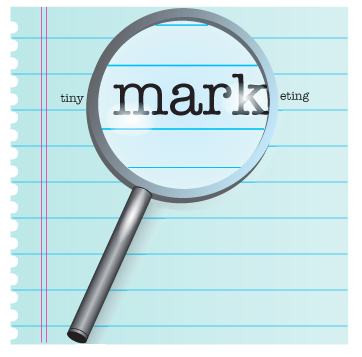 Little things can have a big impact, especially in
marketing. Let me give you three examples.
Little things can have a big impact, especially in
marketing. Let me give you three examples.
Scenario 1: You walk into a restaurant and are seated. Your
server comes up to you and hands you a menu and explains the specials of the
day, describing each meal, how it is cooked, and what your side options are.
Then the server asks if you have any questions before you place your order.
Scenario 2: You are driving down the street when you notice
that a local soccer club is having a car wash in a parking lot. A couple of
very cute elementary-aged children are waving to you and pointing to their
hand-drawn sign. You smile, wave back and turn into the lot to get your car
washed.
Scenario 3: You notice that your neighbor has a new lawn
mower. You think you need a new lawn mower as well. You have never seen a mower
quite like this one. You take a picture of the neighbor’s mower, do a search on
your phone for the same model and order it.
Question 1: What do
these three things have in common?
They are all marketing to you in a way that leads you toward
a decision to spend money... and you are unaware that marketing is happening. Many
times when we think of marketing, we think of big advertising campaigns – like
Super Bowl ads, flashy websites, corporate sponsorships, blogs, social media
posts, etc. Most of these big marketing items are designed to make you aware of
a brand. For instance, if I see a car commercial during a football game, the
advertiser is not expecting me to stop what I am doing and run to the local
dealership to buy the advertised vehicle. They are actually wanting me to
remember the brand so when I’m not watching TV, but am in the market for a new
car, I recall their product. However, there is much more to marketing than big
awareness campaigns. There are tiny marketing steps that lead customers to a
sale. We often don’t think of them as marketing, but they are as important – or
maybe more important – than big, flashy awareness campaigns. Tiny marketing
kind of sneaks up on you. We don’t notice the little things that make people
decide to buy one item over another, make them spend money when they weren’t
expecting to, and seek out a brand that they had never heard of before.
Question 2: What is
different about these three scenarios?
They describe three different situations where the customer
decides to make a purchase, but for contrary reasons.
- The first scenario describes a situation where you
are expecting to make a purchase. You are going to buy something to eat at the
restaurant. The server is using marketing to guide the purchase to higher
profits (smart restauranteurs put their highest profit items in the daily
specials.) Engagement with the customer when they are ready to make a purchase
is essential for this tiny step in marketing to work.
- The second is different from the first scenario
because you weren’t planning on making a purchase. But when you saw those cute
little kids waving to you, something started tugging on your heart and, on
impulse, you drove into the parking lot and paid for a car wash. Attracting the
attention of the consumer at the right time is key here, but it is more than
just placing a product in the aisle of the checkout line. The appeal of an
impulse buy has to connect with emotions. The "feel good” nature of this kind
of marketing makes your product or service something that cannot be resisted. If
you can connect on an emotional level, you will secure the sale even if the
consumer wasn’t planning on making a purchase.
- The third scenario has to do with calling
attention to the uniqueness of a product or service. A lawnmower should be a
functional tool. As long as it is cutting the grass, who cares how it looks?
However, we really do care how we look to those around us. Peer pressure sells.
If my neighbor has a unique looking mower, I am attracted to the brand. What
should we learn here? Branding matters. It helps you stand out from your
competition. The power of prestige sells and that happens when marketing draws
attention to the distinctiveness of the brand. But there are a couple of other
tiny, but powerful, marketing tools at work here. When you searched for your
neighbor’s mower, it had to be quickly found on your phone. Searchable photos
of your products, logo, and other branded images have to be available online.
And when you found the item you were looking for, you had to have a clear call
to action to be able to purchase it. These are essential to marketing in
today’s economy.
Little things in marketing have a big impact. So how is your
tiny marketing working for you? Make these small steps a part of your marketing
plan. They are essential to your success.